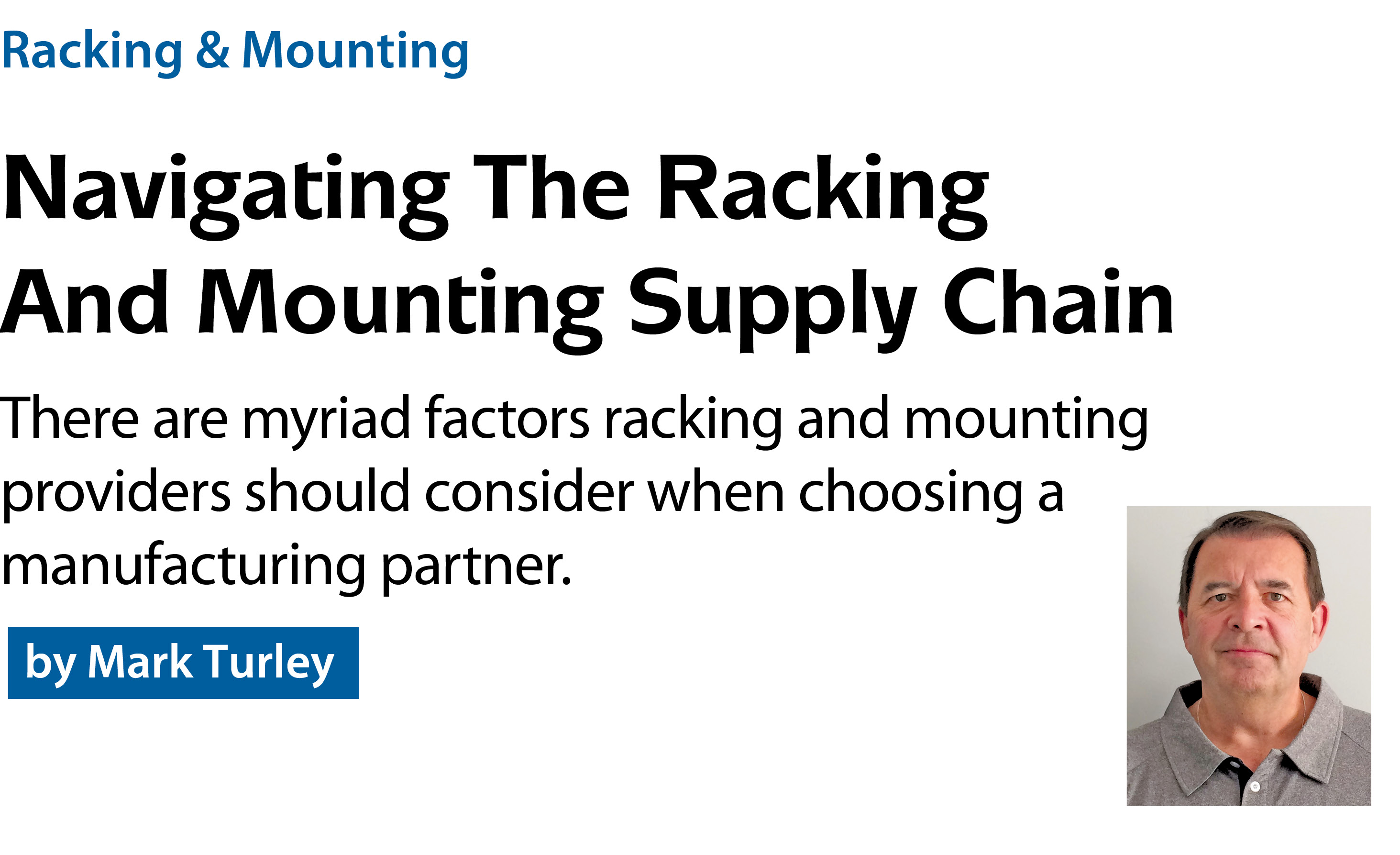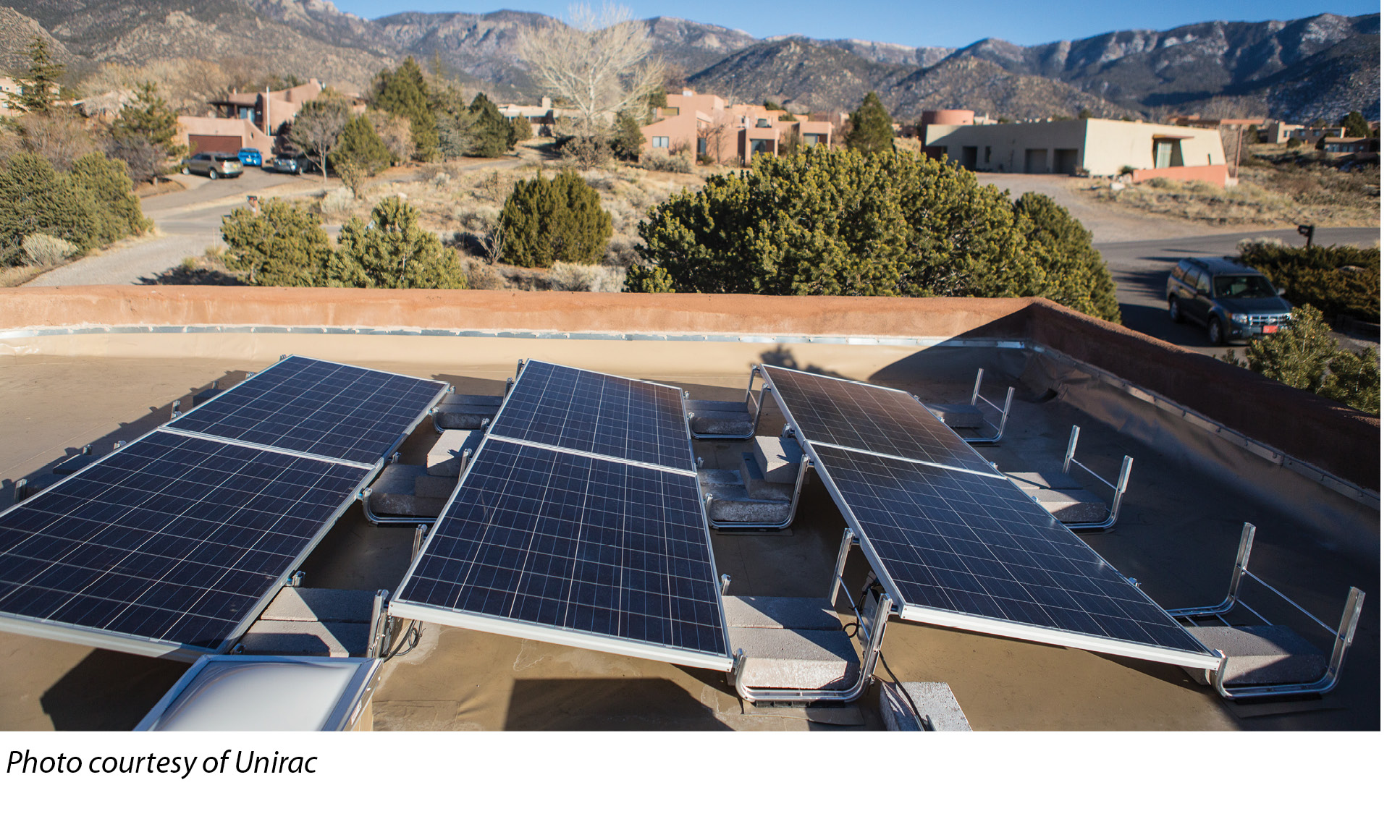

301 Moved Permanently
The U.S. solar market is poised for a major boom in 2017 and the next few years. The question is, how will the manufacturing suppliers that work with solar racking and mounting product developers allocate capacity and analyze related risks as the solar industry continues to grow?
Some manufacturing suppliers may see the solar market in the U.S. as the longest-emerging market that is still somewhat risky and unstable. Because of this viewpoint, many of them have chosen to allocate only a small fraction of their manufacturing capacity to making racking and mounting system components for this market.
According to data from the Federal Reserve, U.S. manufacturers, overall, have filled approximately 75% of their available capacity during the first half of this year - an amount on par with the 78.5% average for the years 1972 through 2014. This is a strong indicator U.S. manufacturing has recovered well from a low utilization of 63.8% in 2009.
With the rebounding trend, will manufacturing suppliers tend to reduce their piece of the capacity pie already dedicated to riskier segments like solar racking and mounting systems?
Selecting a supplier
Solar racking and mounting product developers may notice that their supply-chain manufacturers in the U.S. market are becoming more cautious when looking at production capacity for new opportunities. With manufacturing capacities becoming tighter, suppliers are carefully weighing their risks and taking decisions on capacity allotment more seriously than in recent years.
For the product developer that depends on manufacturing suppliers of aluminum or steel racking and mounting components, one of the most dangerous pitfalls is to analyze a potential aluminum extruder or metal fabricator incorrectly in the sourcing process. The sourcing approach it chooses is a critical step in ensuring the product developer’s success and market growth.
Approaches
Solar racking and mounting product developers use a variety of sourcing approaches when looking for suppliers to manufacture their products’ components. Some product developers toss a wide net in the quoting process, analyze the results, and make decisions based on price and capabilities. Other developers use a more deliberate and strategic approach, working only with manufacturing supplier companies in which they have confidence based on prior, firsthand experience.
Still, others prefer to vet in advance the manufacturing suppliers they will go to for quoting and manufacturing their products. This approach includes a rigorous upfront engagement that usually includes site visits and a full understanding of the manufacturing supplier’s values, goals, markets and resources.

Because of their bandwidth constraints, the length of time it takes solar racking and mounting product developers to find manufacturing suppliers can be challenging and make the value of this time commitment questionable.
It is also important that racking and mounting product developers keep in mind that manufacturing suppliers may quote an opportunity without fully vetting the job and the prospective company offering it. In many instances, the manufacturing supplier does not fully understand the company’s solar racking and mounting project’s overall scope until it becomes a reality. This is when both companies begin to truly understand all of the requirements. It is also when the manufacturing supplier will make decisions on the allocation of resources, production capacity and the attention it gives to the project.
Capacity
In the solar racking and mounting product market, aluminum and steel racking and mounting applications are mostly split, where aluminum dominates rooftop solutions due to weight restrictions and steel is used in a high percentage of ground-mount systems.
Manufacturing suppliers of aluminum extrusion and fabrication services run efficiently when utilizing total capacity in the 80% to 90% range, leaving some production capacity for special situations.
Manufacturers representing the steel industry, on the other hand, tend to run a higher capacity allotment for “hot” technologies or “dominant market end uses” and not worry so much about the percentages of capacity allotted to any one technology or market.
On top of this, plastic injection molding is a growing manufacturing need within the solar racking and mounting product development market, with current capacities mostly available. This may change in the near future as plastic racking components become more prevalent in the solar market.
Choosing a manufacturing supplier that offers more services in-house simplifies the supply chain. A single-source supplier can reduce unneeded supplier-to-supplier transitions in an already challenging supply-chain puzzle.
Utilization
Many manufacturing suppliers have internal targets for the percentage of capacity they allot to any one market - typically 10% of their total manufacturing capacity - spreading production allocations across vertical markets and balancing capacity.
This strategic sourcing approach helps lower their risk from a single market or product either dominating or collapsing their capacity, causing major production issues or swings in revenues. Manufacturing suppliers that currently support the solar racking and mounting product market face the following capacity-utilization questions:
- Should they set aside capacity and resources for new racking and mounting technologies within solar?
- Should they allot more of their capacity to proven product developers of solar racking and mounting systems?
- Should they analyze the strengths of their customers and potentially lower capacity allotments depending on the findings?
- Should they hold steady, offering only minimal expansion in capacity?
The answers are complicated. But smart manufacturing suppliers are at least thinking about these scenarios.
Although some manufacturing suppliers of solar racking and mounting components may “ride the wave” as the market trends upward, they will not be prepared for the potential downside should it or any particular product developer customer lower forecasts and production needs. A boom market’s retraction can leave these manufacturing suppliers with a large void if the wave collapses or slows in proportion.
Risk mitigation
The risks involved for manufacturing suppliers in deploying resources for solar racking and mounting providers are as high as the financial rewards can be. Timelines for the development of new products tend to string out longer than expected, and oftentimes, projected margins are not realized until much further into the sales cycle than planned.
Manufacturing suppliers also need to consider that the solar market, in general, tends to have more variation than other markets, and racking and mounting product developers’ purchasing forecasts can be much different from actual orders.
Although newer developing companies may have racking and mounting products appealing to both the market and the manufacturing suppliers, without financial stability, it can be a difficult task to get the products from development to deployment. In this case, the tables are turned, and the suppliers must conduct a thorough analysis of the financial strength of a new customer entering into the market. This is a challenging task, as the customer’s financial information may not be easy to obtain.
The often chosen path for allotting more or less capacity in a market has evolved beyond analyzing the strengths and weaknesses of the existing customer base within that market. Manufacturing suppliers will use a series of matrices to determine data-driven trends and a market’s capacity worthiness. These analyses include, but are not limited to, year-to-year spend, internal profit margins, capacity utilization, and market research trends/forecasts.
Looking closely at the outcomes, manufacturing suppliers can take advantage of the opportunity to increase racking and mounting production volumes if the results are favorable - or reduce capacity if they are not.
Research
It is important to note that the manufacturing supply-chain base in the U.S. has shrunk over the past 10 years. Although there are fewer manufacturing suppliers across the country, the survivors have done an admirable job using lean manufacturing techniques to increase efficiencies and quick response manufacturing to decrease lead times. Where these manufacturers deploy added capacity is a moving target.
It is in the best interest of solar racking and mounting product developers to keep the following tips in mind when looking for supplier manufacturing capacity and competencies:
- Research manufacturing suppliers for options;
- Determine the commitment level of a supply-chain manufacturer to service the solar industry, in general, and the racking and mounting product developers, in particular;
- Reduce the outsourcing needed by choosing a manufacturing supplier that provides multiple services, making the supply chain less complicated and reducing challenges, such as lead-time stack up and freight damage from multiple shipping trips between suppliers;
- Offer an honest data-driven approach for potential requirements;
- Meet the chosen manufacturing supplier face-to-face at its facility;
- Develop a solid relationship with the manufacturing supplier’s service departments;
- Offer a direct and stable line of communication; and
- Seek manufacturing suppliers that will deliver more than just components and will work closely with you to ensure products are manufacturable.
Solar racking and mounting product developers need to approach the supply chain with an honest and open dialogue with their manufacturing suppliers by offering critical pieces of data and information. In turn, when capacities become tight, it is necessary for manufacturing suppliers to review the entire market and make decisions based on the data-driven trends.
Market indicators
Most indicators are trending upward in racking and mounting installations, and overall solar array deployments are naturally pushing manufacturing supplier capacity requirements upward. As we approach the end of 2016 - and begin to see the solar market’s growth in 2017 and beyond - manufacturing suppliers will be analyzing their next move. It is likely that their customers already offering a strong relationship and commitment level will receive the first chance to add to the suppliers’ allotted capacity.
Most manufacturing suppliers serving solar racking and mounting product developers have a positive view of the market. They are embracing the challenges and looking forward to supporting the boom.
Racking & Mounting
Navigating The Racking And Mounting Supply Chain
By Mark Turley
There are myriad factors racking and mounting providers should consider when choosing a manufacturing partner.
si body si body i si body bi si body b
si depbio
- si bullets
si sh
si subhead
pullquote
si first graph
si sh no rule
si last graph